The Dyson DC40 is a powerful vacuum cleaner known for its efficient cleaning capabilities. However, like any electronic device, it can sometimes encounter operational problems, with one of the most frustrating being power-related issues. When your Dyson DC40 won’t turn on, it can disrupt your cleaning routine and leave you wondering about the cause.
Affiliate disclosure: As an Amazon associate, We'll earn a commission for every successful order through our affiliate links in the article. However, you won’t be charged anything for this.
In this comprehensive guide, we’ll explore the various reasons why your Dyson DC40 might not be powering on and provide detailed troubleshooting steps to get it working again. From simple fixes you can handle yourself to identifying when professional help is needed, this article covers everything you need to know about resolving power issues with your Dyson DC40. Whether it’s a problem with the power supply, internal components, or routine maintenance needs, we’ll help you diagnose and solve the problem efficiently.
Common Causes of Power Failure in Dyson DC40
When your Dyson DC40 refuses to turn on, several potential culprits might be responsible. Identifying the root cause is the first step toward resolving the issue and getting your vacuum operational again.
Power Supply Components
The most obvious place to start troubleshooting is with the power supply system. Begin by verifying that your power outlet is functioning correctly by plugging in another device. Next, carefully examine the power cord for any visible damage such as fraying, cuts, or kinks that might interrupt electrical flow. Pay special attention to the areas near the plug and where the cord enters the vacuum, as these spots are particularly susceptible to wear and tear.
If you discover damage to the power cord, it’s essential to replace it rather than attempt repairs. Using a damaged cord can pose serious safety hazards, including electrical shock and fire risks. Replacement cords can be purchased directly from Dyson or through authorized retailers to ensure compatibility and safety.
If you find that the power cord is damaged, replacing it is crucial for safety and functionality.
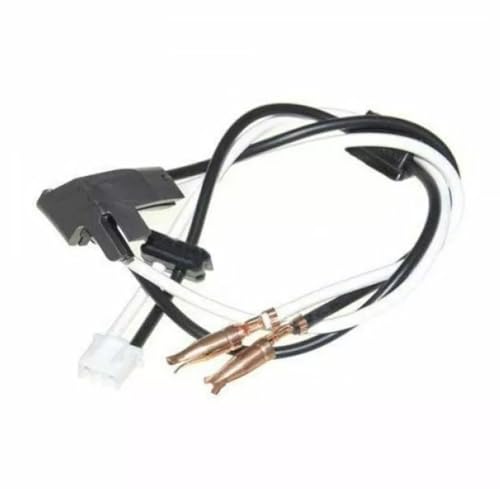
Genuine OEM replacement for Dyson DC40 power issues
Switch Functionality Issues
The power switch on your Dyson DC40 can sometimes be the source of the problem. Over time, dust and debris can accumulate around and inside the switch mechanism, preventing proper contact and function. Additionally, the switch itself may wear out after repeated use.
To address switch issues, first, ensure the vacuum is unplugged. Then, clean the switch area thoroughly using a soft, dry cloth. If possible, use compressed air to blow out any fine particles that might have worked their way into the switch mechanism. After cleaning, test the switch by plugging in the vacuum and pressing the power button firmly several times. If the vacuum still doesn’t respond, the switch may need replacement, which typically requires professional service.
Internal Circuitry Problems
More complex issues may involve the vacuum’s internal circuitry. Circuit boards and electrical connections can fail due to age, overheating, or power surges. Some Dyson models include a reset function for the internal circuits, so check your user manual to see if your DC40 has this feature.
If your vacuum has been running for an extended period before failing, overheating might be the culprit. In this case, unplug the unit and allow it to cool completely for at least 30 minutes before attempting to restart it. If the vacuum briefly powers on but then shuts off, this could indicate an overheating protection mechanism at work.
Troubleshooting Dyson DC40 Power Issues: Step-by-Step Guide
When your Dyson DC40 won’t turn on, a systematic approach to troubleshooting can help identify and resolve the problem efficiently. Follow these detailed steps to diagnose and fix power-related issues.
Checking the Power Source
- Test the outlet: Plug another device into the same outlet to confirm it’s working properly.
- Try another outlet: If the original outlet isn’t functioning, connect your vacuum to a different outlet that you know works.
- Inspect circuit breakers: Check your home’s electrical panel to ensure the circuit hasn’t tripped.
- Examine the power cord: Carefully inspect the entire length of the cord for damage, paying special attention to areas that might bend frequently.
- Test cord continuity: If you have a multimeter, check for continuity throughout the power cord to identify any internal breaks.
Inspecting and Cleaning the Power Switch
- Unplug the vacuum: Always disconnect from power before performing any maintenance.
- Clean the switch exterior: Use a soft, dry cloth to remove dust and debris from the switch and surrounding area.
- Test switch function: After cleaning, plug in the vacuum and firmly press the power button multiple times.
- Check for resistance: The switch should have a definite “click” feel when pressed. If it feels mushy or doesn’t click, it may be damaged.
- Look for visual damage: If possible, inspect the switch for any signs of burning, melting, or other damage that would indicate failure.
If the power switch is damaged, it will need to be replaced to restore functionality.
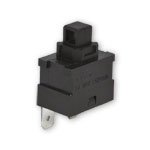
Genuine Dyson replacement for DC40 power switch
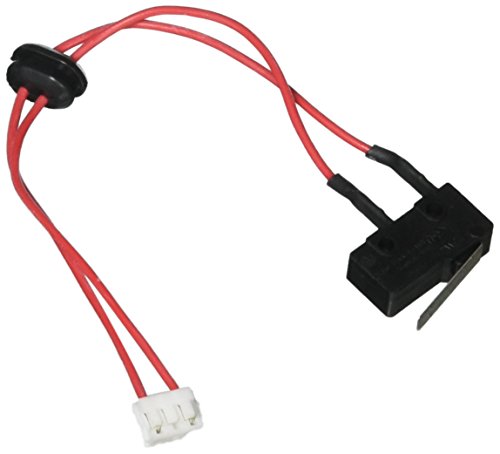
OEM wiring harness for DC40 power switch

Complete electrical assembly for DC40 power switch
Addressing Filter and Airflow Blockages
Surprisingly, clogged filters and blocked airways can cause your Dyson DC40 to shut down or fail to start due to overheating protection mechanisms.
- Remove and inspect filters: Take out both the pre-motor and post-motor filters.
- Clean filters thoroughly: Wash the filters under cold running water until the water runs clear, squeezing gently to remove embedded dirt.
- Allow complete drying: Let filters air dry completely for at least 24 hours before reinstalling—never use a vacuum with damp filters.
- Check for blockages: Remove the hose and inspect for obstructions throughout the airflow pathway.
- Clear the brush bar: Ensure the brush bar is free of hair, string, and debris that could cause it to jam.
- Reassemble and test: Once everything is clean and dry, reassemble the vacuum and test its operation.
If your filters are damaged or worn, replacing them can improve airflow and prevent overheating.

Best for 9-month supply with 3+3 filters

Mid-range 2+2 set with DC40 compatibility
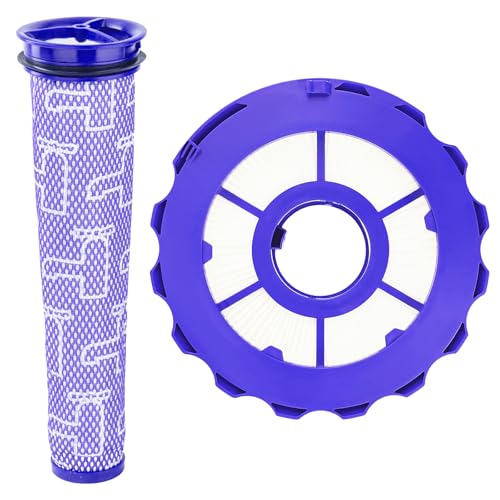
Affordable 1+1 set for budget users
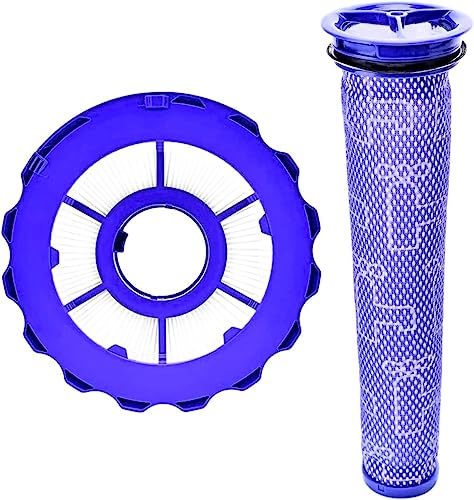
Lowest price 1+1 set with high efficiency
Examining the Suction Valve System
The Dyson DC40 features a suction valve mechanism that can become problematic if clogged or damaged.
- Locate the secondary filter: Find and remove the secondary filter on the left side of the vacuum.
- Access the valve area: This will expose the hose and valve components.
- Inspect for blockages: Look for pet hair, fabric, or other debris that might be jamming the valve.
- Remove obstructions: Carefully clear any blockages you find, being gentle with the valve mechanism.
- Test valve movement: Ensure the valve moves freely after cleaning.
- Reassemble and test: Replace the filter and test the vacuum’s operation.
Advanced Troubleshooting for Persistent Power Problems
If basic troubleshooting hasn’t resolved the issue, you may need to investigate more complex problems that could be preventing your Dyson DC40 from turning on.
Motor Assessment and Diagnosis
The motor is the heart of your vacuum cleaner, and problems with it can prevent the unit from powering up properly.
- Listen for unusual sounds: When attempting to start the vacuum, listen carefully for any grinding, buzzing, or whirring noises that might indicate motor problems.
- Check for burning smells: A burnt odor often suggests motor overheating or electrical component failure.
- Test motor resistance: If you have technical skills and a multimeter, you can check the motor’s resistance to determine if it’s functioning correctly.
- Inspect motor connections: Look for loose or damaged wires connected to the motor.
- Evaluate motor brushes: Over time, the carbon brushes in the motor can wear down, preventing proper electrical contact.
If the motor is failing, replacing it may be necessary to restore the vacuum’s functionality.
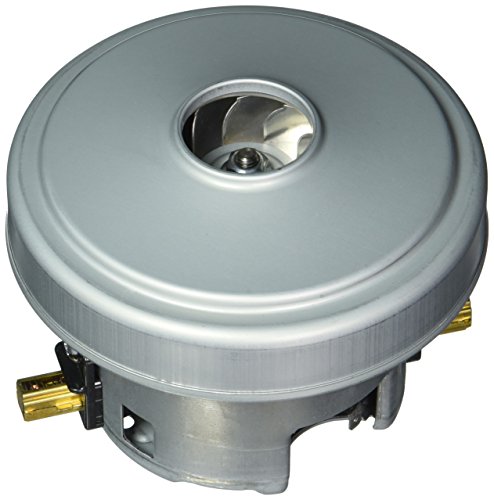
Genuine replacement motor for Dyson DC40 vacuum
Circuit Board and Wiring Inspection
Electrical components beyond the motor can also fail and prevent your vacuum from starting.
- Examine visible wiring: Look for any obviously damaged, disconnected, or burnt wires.
- Check for loose connections: Ensure all wire connectors are firmly seated.
- Inspect the circuit board: Look for signs of damage such as burnt components, bulging capacitors, or corrosion.
- Test continuity: Use a multimeter to check continuity in suspicious wires or components.
- Look for reset options: Some internal circuit boards have reset buttons or procedures that can restore functionality.
Thermal Cutoff and Protection Systems
Dyson vacuums include thermal protection systems that shut down the unit to prevent damage from overheating.
- Allow cooling time: If the vacuum has been running for a while before failing, unplug it and let it cool for at least 30-60 minutes.
- Check for blockages: Thoroughly inspect all airways and filters, as blockages are the most common cause of overheating.
- Locate thermal fuses: These safety devices may need replacement if they’ve been triggered.
- Reset protection systems: Some models have reset procedures for thermal protection systems.
- Test after cooling: Once the vacuum has completely cooled, try operating it again to see if the thermal protection was the issue.
Maintenance Tips to Prevent Future Power Issues
Preventing power problems is always easier than fixing them. Regular maintenance of your Dyson DC40 can significantly reduce the likelihood of encountering power-related issues in the future.
Regular Cleaning Schedule
- Empty the dust bin frequently: Don’t wait until it’s completely full, as this can strain the motor.
- Wash filters monthly: Clean both pre-motor and post-motor filters at least once a month or more frequently with heavy use.
- Inspect and clean the brush bar weekly: Remove hair and debris that can cause the brush to jam or create excess strain.
- Check hoses and airways: Regularly inspect for blockages that could restrict airflow.
- Clean the cyclone assembly: Periodically clean the cyclone components to maintain optimal suction.
Proper Storage and Handling
- Coil the cord properly: Avoid tight wrapping that can damage the internal wires over time.
- Store in a clean, dry place: Protect your vacuum from dust, moisture, and extreme temperatures.
- Use wall mounts if available: Proper storage can prevent strain on components.
- Avoid dropping or rough handling: Physical impacts can damage internal components.
- Keep away from heat sources: Excessive heat can damage electrical components and plastic parts.
Recognizing Early Warning Signs
- Pay attention to unusual sounds: New noises often indicate developing problems.
- Monitor suction performance: Gradually decreasing suction may signal internal issues.
- Watch for intermittent operation: If your vacuum occasionally cuts out, address the issue before complete failure occurs.
- Note changes in operating temperature: If the vacuum seems hotter than usual during operation, investigate possible causes.
- Address minor issues promptly: Small problems can escalate if left unattended.
Frequently Asked Questions (FAQ)
Why does my Dyson DC40 turn on but then immediately shut off?
This behavior typically indicates either an overheating issue or a failing battery/power system. First, check for blockages in filters and airways that could cause overheating. Clean all filters thoroughly and ensure they’re completely dry before reinstalling. Next, inspect the power cord for damage, particularly at stress points. If the problem persists after cleaning, the motor’s thermal protection may be activating due to internal issues requiring professional service.
How often should I clean the filters on my Dyson DC40?
Dyson recommends washing the filters at least once a month under cold running water. However, if you have pets or use the vacuum frequently, you may need to clean them more often. Wash until the water runs clear, then allow the filters to dry completely for at least 24 hours before reinstalling. Never use a vacuum with damp filters as this can damage the motor and electrical components.
Can I replace the power switch on my Dyson DC40 myself?
While technically possible, replacing the power switch on a Dyson DC40 requires disassembling several components of the vacuum and working with electrical connections. Unless you have experience with electronic repairs, it’s generally recommended to have this service performed by a professional technician. Improper installation could create safety hazards or cause further damage to your vacuum.
What should I do if my Dyson DC40 makes unusual noises when I try to turn it on?
Unusual noises when attempting to start your vacuum often indicate mechanical problems with the motor or brush bar. First, check the brush bar for obstructions like hair or string that might be causing it to jam. If the brush bar is clear, the noise likely comes from the motor itself. In this case, stop using the vacuum immediately to prevent further damage, and consult with a professional repair service. Continuing to use a vacuum with a failing motor can lead to more extensive and costly damage.
Is it worth repairing my Dyson DC40 or should I replace it?
This depends on several factors including the age of your vacuum, the specific issue, and repair costs. As a general guideline, if your DC40 is less than 5 years old and the repair cost is less than half the price of a new equivalent model, repair is often worthwhile. Dyson vacuums are designed to be durable and typically last many years with proper maintenance. However, if your vacuum has multiple issues or is older, replacement might be more cost-effective in the long run. Consider that newer models may offer improved features and efficiency as well.
Conclusion
Troubleshooting power issues with your Dyson DC40 vacuum cleaner requires a systematic approach, starting with the simplest possible causes before moving to more complex problems. In many cases, power problems stem from easily resolvable issues like clogged filters, blocked airways, or power supply problems that you can fix yourself with basic tools and knowledge.
Regular maintenance is key to preventing future power issues. By establishing a routine cleaning schedule for filters, brush bars, and airways, you can significantly extend the life of your Dyson DC40 and avoid many common problems that cause power failures. Remember that proper storage and handling also play important roles in maintaining your vacuum’s performance over time.
For persistent problems that don’t respond to basic troubleshooting, don’t hesitate to seek professional assistance. Attempting complex repairs without proper knowledge can potentially create safety hazards or cause further damage to your vacuum. With proper care and timely attention to developing issues, your Dyson DC40 can provide many years of reliable service for all your cleaning needs.






